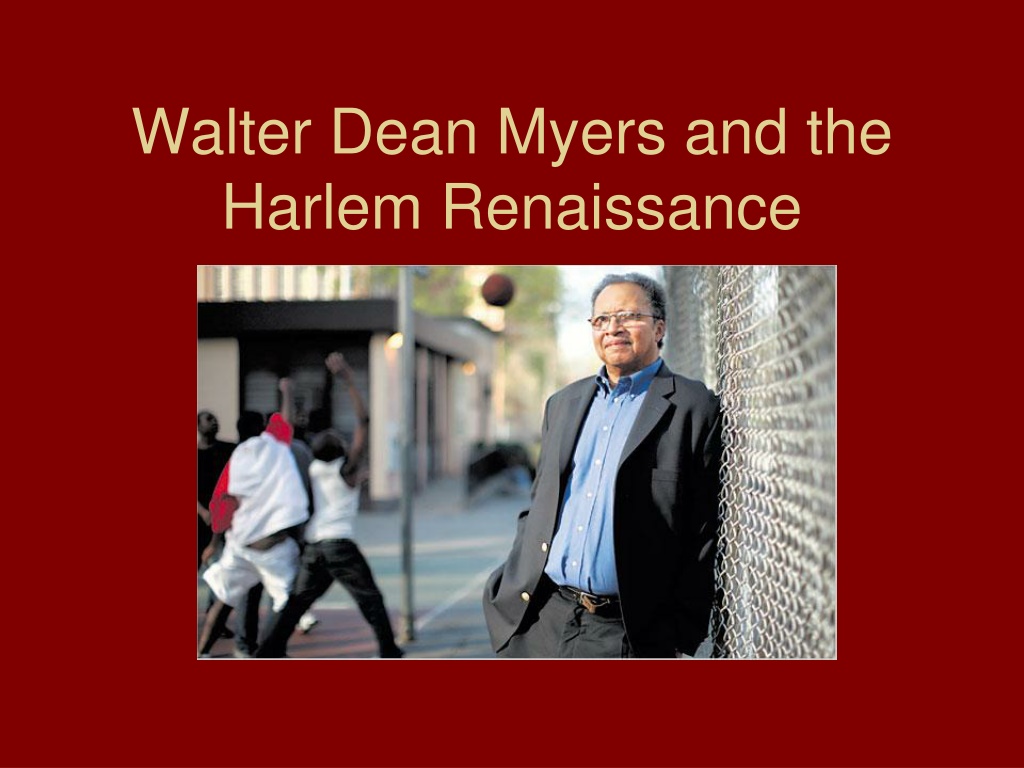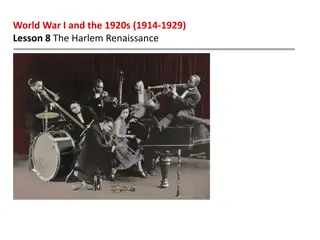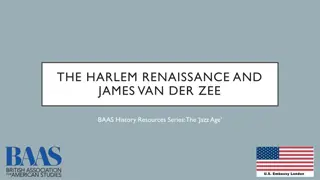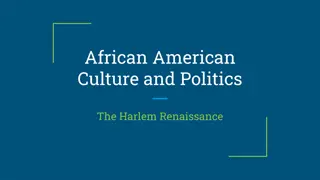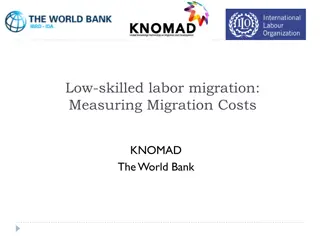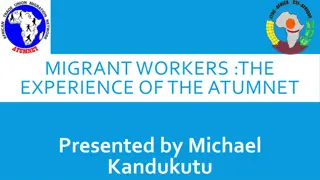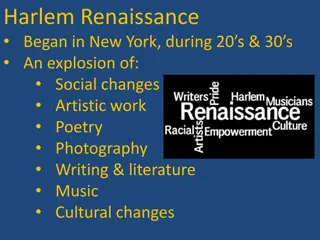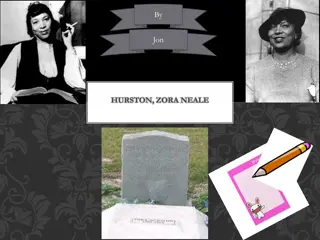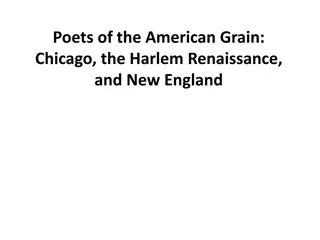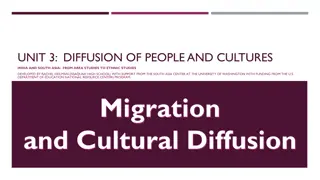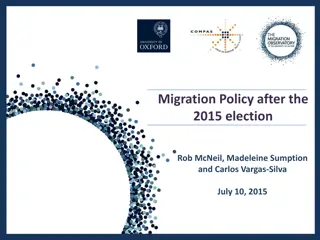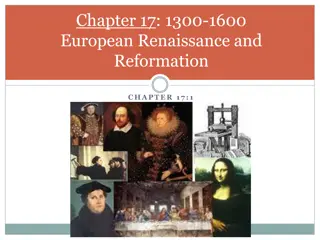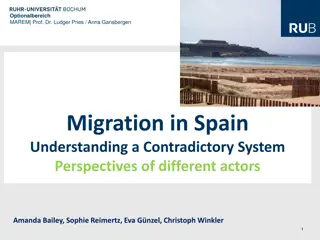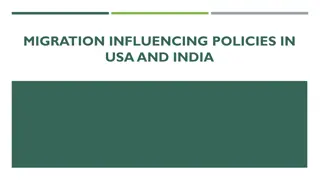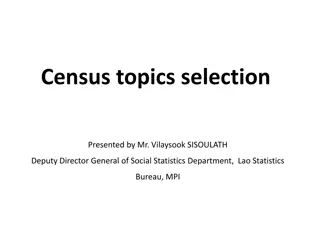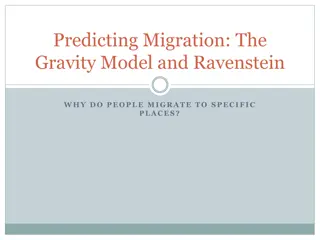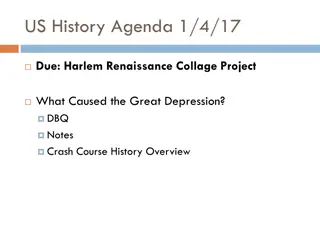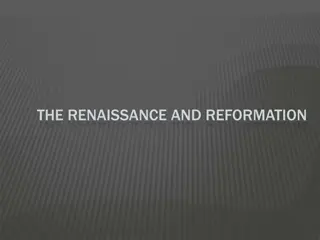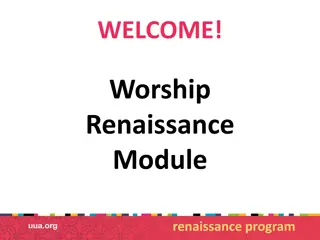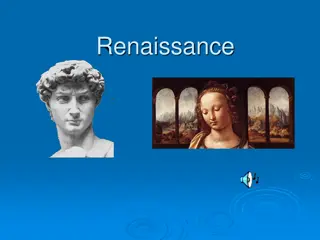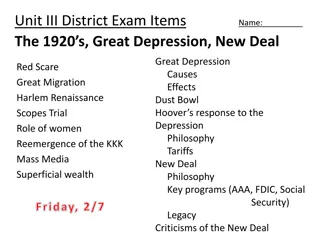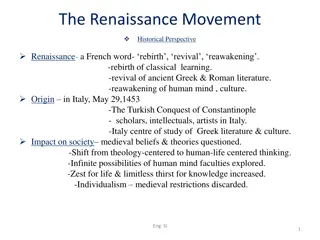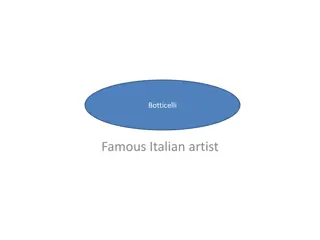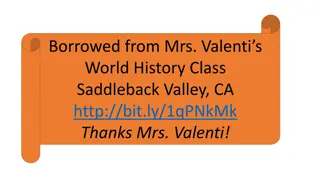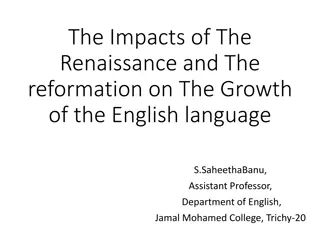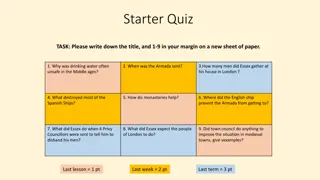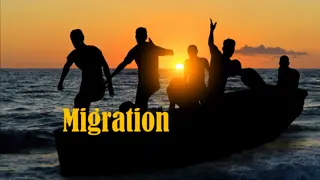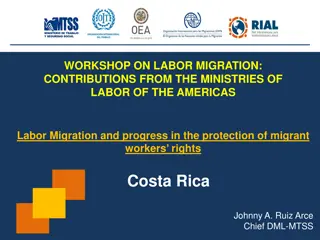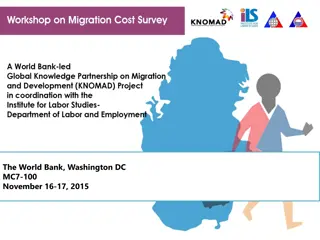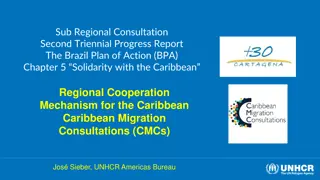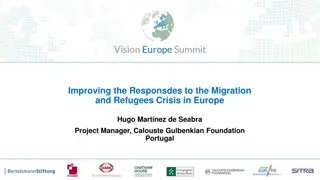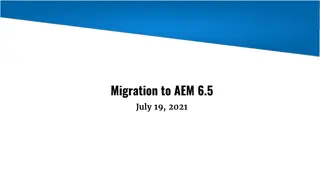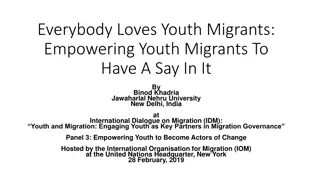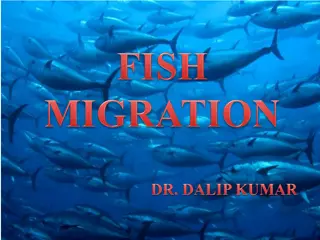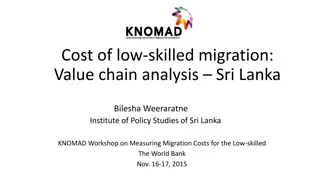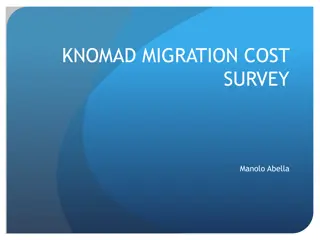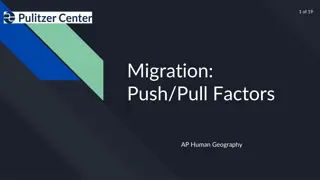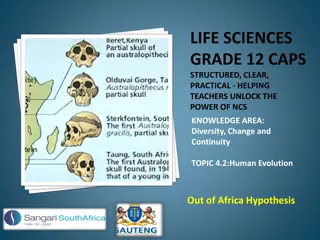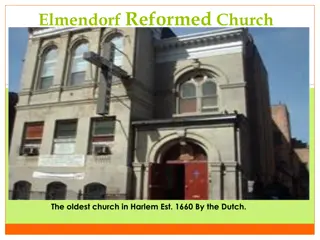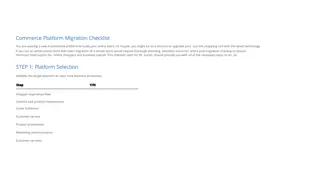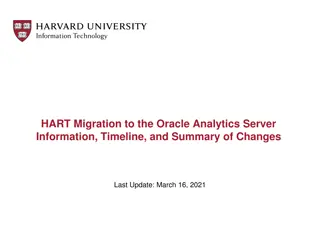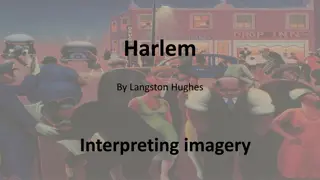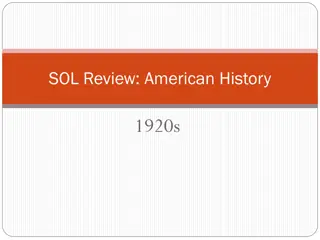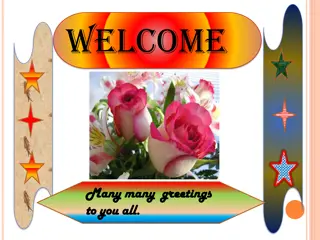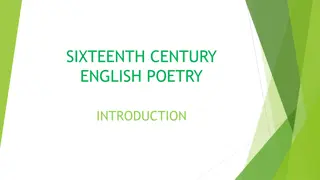The Harlem Renaissance and Its Connection to the Great Migration
The Harlem Renaissance was a pivotal period of African American cultural flourishing, expressed through various art forms like paintings, music, dance, theater, and literature. This era coincided with the Great Migration, where economic opportunities in the North led to a mass movement of black Americans, particularly to cities like New York. This migration provided newfound intellectual and social freedoms for black artists, writers, and musicians, enabling them to advocate for civil rights and equality.
Download Presentation

Please find below an Image/Link to download the presentation.
The content on the website is provided AS IS for your information and personal use only. It may not be sold, licensed, or shared on other websites without obtaining consent from the author. Download presentation by click this link. If you encounter any issues during the download, it is possible that the publisher has removed the file from their server.
E N D
Presentation Transcript
Walter Dean Myers and the Harlem Renaissance
Walter Dean Myers Born in 1937 Given to his father s first wife, Florence and her husband Herbert Grew up in Harlem during the time known as the Harlem Renaissance
SOUTHERN BLACKS AND THE GREAT MIGRATION Most African Americans remained in the South nearly fifty years after the Civil War. Why did African Americans move North: 1) World War I generates new opportunities for industry 2) much of existing labor supply leaves work force for War RESULT: Black populations in northern cities like Chicago and New York in unprecedented numbers. The Great Migration In New York city, this occurred on the upper west side, in Harlem.
What is it? The Harlem Renaissance was a flowering of African American social thought which was expressed through Paintings Music Dance Theater Literature
How does the Harlem Renaissance connect to the Great Migration? The economic opportunities of the era triggered a widespread migration of black Americans from the rural south to the industrial centers of the north - and especially to New York City. In New York and other cities, black Americans explored new opportunities for intellectual and social freedom. Black American artists, writers, and musicians began to use their talents to work for civil rights and obtain equality.
125th Street: pg. 78-79
Who do we associate with the Harlem Renaissance? Artists such as Jacob Lawrence Authors such as Langston Hughes Musicians such as Duke Ellington, Louis Armstrong, and Bessie Smith https://www.youtube.com/watch?v=h2iEu lpX910
Music of the Harlem Renaissance washsmall Bessie Smith Duke Ellington Louis Armstrong Cab Calloway
Duke Ellington Ellington was a jazz composer, conductor, and performer during the Harlem Renaissance. During the formative Cotton Club years, he experimented with and developed the style that would quickly bring him worldwide success. Ellington would be among the first to focus on musical form and composition in jazz. Ellington wrote over 2000 pieces in his lifetime.
The Harlem Renaissance gave birth the many important publications, such as The Crisis magazine, edited by W. E. B. DuBois, giving black writers a forum where their voices could be heard.
Langston Hughes He wrote poetry, short stories, novels, and plays, and is known for his involvement with the world of jazz. His life and work were enormously important in shaping the artistic contributions of the Harlem Renaissance in the 1920s. He wanted to tell the stories of his people in ways that reflected their actual culture, including both their suffering and their love of music, laughter, and language itself.
I, too, sing America I, too, sing America. To listen to Langston Hughes read his poem, click here. I am the darker brother. They send me to eat in the kitchen When company comes, 'I, Too' written just before Hughes return to the States from Europe and after he'd been denied passage on a ship because of his color, has a contemporary feel in contrast to the mythical dimension of 'The Negro Speaks of Rivers'. But I laugh, And eat well, And grow strong. Tomorrow, I'll be at the table It is no less powerful however, in its expression of social injustice. The calm clear statements of the 'I' have an unstoppable force like the progress the poem envisages. Hughes's dignified introductions to these poems and his beautiful speaking voice render them all the more moving. When company comes. Nobody'll dare Say to me, "Eat in the kitchen, Then. Besides, They'll see how beautiful I am From PoetryArchive.org And be ashamed-- What is the tone or mood of this poem? I, too, am America. Why do you think the poem was written and for what audience? List two things in this poem that tell you about life in the United States at the time.
The Artists of The Harlem Renaissance List each art work and write a brief descriptin of what you see. Describe the style of the artwork.
Palmer Hayden The Janitor Who Paints
Study the picture for 2 minutes. Form an overall impression of the painting, then start to focus on individual details. Questions to think about: 1. What do you see? 2. What people do you see? 3. What objects do you see? 4. What colors do you see? 5. What actions/activities do you see? 6. What questions does this painting raise in your mind? 7. How does this painting relate to the Harlem Renaissance? 8. Based on what you have observed, list what you may infer from this painting. Ascent from Ethiopia , Louis Mailou Jones. 1932
Closing Think about and answer the following questions with your group. Write your answers using complete sentences. Refer to your notes to use examples and evidence from the PowerPoint. 1. 2. Why is this period considered a renaissance ? How did the Harlem Renaissance change the perception of African-American culture? Why was Harlem a focal point in the movement? (Think about what drew African-Americans to head north). 3.
Resources http://americanhistory.pppst.com/harlem- renaissance.html http://www.poetryarchive.org/poetryarchive/s inglePoem.do?poemId=1552
